
by Shaula Bellour (Indonesia) | Dec 4, 2014 | 2014, Awareness, Being Thankful, Cultural Differences, Domesticity, Expat Life, Family, Home, Husband, Indonesia, International, Kids, Life, Life Balance, Life Lesson, Living Abroad, Motherhood, Parenting, Responsibility, Shaula Bellour, Twins, World Motherhood
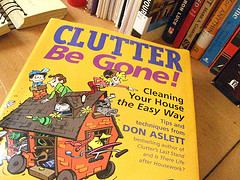 This month marks our third anniversary of living in Jakarta. Considering how empty our house was when we first arrived here, I am staggered at how much stuff we have acquired in that short time.
This month marks our third anniversary of living in Jakarta. Considering how empty our house was when we first arrived here, I am staggered at how much stuff we have acquired in that short time.
We initially started out with garden chairs as living room furniture and took our time furnishing our new space. Though the house isn’t exactly cluttered, it feels full – and I feel daunted by the sheer volume of STUFF that seems to fill every closet and drawer.
It’s the never-ending tide of cheap party favors, orphaned toy and game parts, and plastic galore. It’s the piles of paper: children’s artwork, old receipts, and unfinished magazines. It’s all the things I never use or wear, the boxed objects I might use one day and the stock of (US-bought) items I think I can’t live without.
Moving from the US to East Timor 5 years ago was a great opportunity to clear things out and scale back. Although I did feel a little sad watching an expectant dad cart away our twins’ disassembled cribs the night before we moved, it felt good to sort through our accumulated belongings and assign categories: donate, sell, ship or store.
Donating unwanted items was easy. I arranged for a pick up with a local charity group, stacked everything on my porch and it was all magically whisked away. We sold our car and other big items, sent friends home with plants and other housewares and shipped our edited possessions to Dili.
Everything else went into our storage unit. A few years later I visited it for the first time and was amazed by what we’d deemed worth keeping at the time. I randomly peeked in a few boxes and found…sweaters. Lots of sweaters. What was I thinking? It was winter at the time and we didn’t know how long we’d be away, but still.
We also stored our furniture, though we recently realized that the cost of storing it for the last five years has probably exceeded its value. While visiting the US, my husband spent a day digging out furniture and giving it all away – couches, tables, lamps, washer/dryer…everything. I was thousands of miles away at the time but it felt fantastic.
Leaving East Timor prompted a similar purge. And yet here I am again, feeling the urgent need to reduce and simplify.
Here in Jakarta, this process isn’t as straightforward. While it’s fair to say that nothing will ever go unused, getting rid of unwanted items isn’t as simple as piling them on the porch. I frequently give outgrown kids’ clothes and shoes to friends or neighbors, donate household items to women’s association charity shops, or leave things out to be upcycled by our handcart-pulling bin man.
Last month my children got involved and we went through their toys, books and clothes and filled 10 bags with donations for a local orphanage. Though it was good for them to be part of this process, I would also really like for them to see where their donations are going and consider giving back in other ways (time, money, materials etc.).
Although I will never be a minimalist (or a light packer…), I’m committed to scaling back and am hopeful that this is a first step toward living with less.
A quick internet search reveals hundreds of creative ways to de-clutter, organize and simplify our homes – and ultimately our lives. We are told that having too much stuff is draining and overwhelming us, that we are wasting too much time and money managing our things and that getting rid of all this stuff can make our lives richer and happier.
All of this may be true, but for me the bigger question is about how to acquire less stuff in the first place.
Clearly I don’t have the answer yet, but it’s definitely something I would like to explore and practice – starting now.
Please share your strategies and tips to get me started!
How do you minimize/manage the “stuff” in your house and life? Do you have any tips for living with less?
This is an original post for World Moms Blog by Shaula Bellour.
Shaula Bellour grew up in Redmond, Washington. She now lives in Jakarta, Indonesia with her British husband and 9-year old boy/girl twins. She has degrees in International Relations and Gender and Development and works as a consultant for the UN and non-governmental organizations.
Shaula has lived and worked in the US, France, England, Kenya, Eritrea, Kosovo, Lebanon and Timor-Leste. She began writing for World Moms Network in 2010. She plans to eventually find her way back to the Pacific Northwest one day, but until then she’s enjoying living in the big wide world with her family.
More Posts
by Ann Marie Wraight | Nov 24, 2014 | Cultural Differences, Culture, Greece, Humor, Travel, World Motherhood
 How many of you are experiencing a golden period in your lives with little or no stress? Who is feeling satisfied with their national education and health systems? Well, I hope you are more fortunate than we are in Greece where we have unemployment rates in some demographics of up to 40%! The education system is going from bad to worse and forget going to the state run hospital and expecting satisfactory health care.
How many of you are experiencing a golden period in your lives with little or no stress? Who is feeling satisfied with their national education and health systems? Well, I hope you are more fortunate than we are in Greece where we have unemployment rates in some demographics of up to 40%! The education system is going from bad to worse and forget going to the state run hospital and expecting satisfactory health care.
Due to all this nationwide negativity and disappointment, I decided to take a humorous look at some Greek customs and habits which have caused smiles and even hilarity over the years. Hey, most of us who live in Greece are in serious need of laughter therapy! So, let me share with you some little gems that I’ve experienced over the last 2 decades and hope some will bring a smile to your face!
I have driven all over Europe and have seen many odd things but I have to take my hat off to a large proportion of Greek drivers. These people seem to have an amazing ability to multitask. I was astounded when I first arrived here to see whole families mounted on little motorbikes, something like the Dalton brothers all in a row! Apart from being stunned at a bunch of road safety regulations which were being broken, I was amazed at how such a small vehicle could be powerful enough to transport a whole clan from point A to B. Thank heavens that such sights have become rare in towns and cities over the past few years since enforcement of safety regulations has become much stricter! I only see such things from time to time in villages and on islands where the traffic police tend to be more tolerant and turn a blind eye. Going back to the point I made about multitasking, imagine that to pull off such an acrobatic feat you need to combine an incredible sense of balance, total concentration on the road and on rainy days the ability to steer holding an umbrella!
I’m British and nobody would dare do such a thing in the UK unless they were an acrobat in a circus!
Another thing which I found a little difficult to get used to is the reduced personal space that most N. Europeans are used to. There is definitely a tendency to be within touching distance of the person you are chatting to. Most Greeks are a passionate bunch, full of the Mediterranean joy of life. When engaging in conversation, even with perfect strangers, there’s a lot of back slapping and arm waving to punctuate every sentence.
I was once almost hugged into a coma by a charming taxi driver who was a total stranger.
The reason why? He asked me what my favourite Greek food was and when I replied (in Greek) that I loved spinach pie made by my mother-in-law, he went into a passionate frenzy! He thought that a foreigner speaking Greek was really quaint, but it seems that using the words “mama” and “pie” in the same sentence triggers a deeply rooted Greek male reaction! So be warned, if you should ever travel to lovely Greece, stay at least three paces back from men if you are intending on broaching the subject of mothers and their skills…
I should also warn you about one specific hand gesture which you should avoid at all costs should you ever engage in conversation with a Greek. Let me share a very humiliating story with you.
When I first arrived in Greece over two decades ago, most correspondence was still done using snail mail. After my first week here, I visited the post office in Ioannina to buy stamps and waited patiently in the huge queue. When it finally got to my turn, I politely asked in English for 5 stamps. The woman behind the counter just looked at me blankly so I tried again. This time she started talking loudly but it was all just Greek to me then and I didn’t have a clue what she was saying. She seemed to be really agitated, though. At this point everyone in the crowded post office stopped their private conversations and pinned me with their eyes. I gulped, went bright red and made one final embarrassed effort. This time I tried to help her by using a hand gesture. As I said the word five, I put up my right hand with my palm facing outwards. I repeated several times that I wanted five stamps, whilst waving my outstretched palm in front of her. There were gasps from all around the post office and the office employee went crazy!
A young girl who was standing a few places behind me came up and told me in English that I had just told the woman to go to the devil!
This hand gesture is very rude and apparently if you put your hand up it should be with the palm facing yourself. Well, nobody had warned me about that!
I’ve had many funny and embarrassing experiences in Greece and seen things which you wouldn’t ever see in the UK. I have learnt that before I travel abroad it’s imperative to learn about the do’s and don’ts of the culture and people I will be visiting BEFORE I get there.
Have you ever said or done anything in another country which has caused you to cringe with embarrassment in retrospect? What about things you have seen which would never happen in your own country?
This is an original post to World Moms Blog by Ann Marie Wraight of Greece. Photo credit to the author.

Having lived in 4 different countries, Ann Marie finds it difficult to give a short answer about where she's from. She regards herself: Brit by birth, Aussie by nature, with a sprinkling of Greek and German based on her insatiable appetite for tasty food and chilled beer!
This World Mom has been married to her Greek soulmate for 16 years and they are the proud but constantly challenged parents of two overactive teenage boys. (She secretly wonders sometimes if she was given the wrong babies when she left the maternity clinic.) She can't explain the fascination and ability that her 13 and 14 year-olds show in math and physics or that both boys are ranked 1st and 2nd nationally in judo. Ann Marie can only conclude that those years of breastfeeding, eating home cooked meals and home tutoring really DO make a difference in academic and physical performance! The family is keeping its fingers crossed that---with the awful economic crash in Greece---continued excellence in math and/or judo will lead to university scholarships...
In addition to writing, enjoying a good glass of wine and movies, Ann Marie also works as a teacher and tends their small, free-range farm in the Greek countryside.
More Posts
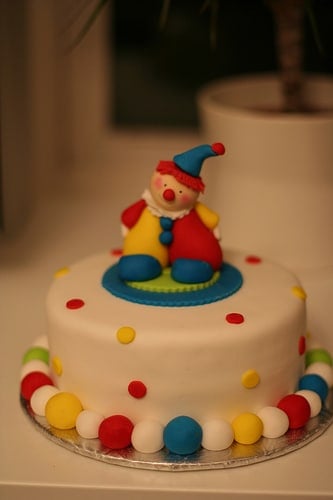
by Ecoziva (Brazil) | Nov 12, 2014 | 2014, Awareness, Brazil, Childhood, Cultural Differences, Entertainment, Family, International, Kids, Life Lesson, Milestones, Moving, Nutrition, Relationships, Stress, Tragedy, World Motherhood
This is the second post of a two-part series. To read part I of this post, please click here
 It was my fourth birthday party. Since we were moving to Brazil soon, it was also a farewell party, and a big one. It was the only big birthday party I have had in my entire life. I remember it was held at some sort of club, there were a lot of people and a hired caterer (something almost unthinkable for my mother!) And then there was the clown. And he wanted to paint my face.
It was my fourth birthday party. Since we were moving to Brazil soon, it was also a farewell party, and a big one. It was the only big birthday party I have had in my entire life. I remember it was held at some sort of club, there were a lot of people and a hired caterer (something almost unthinkable for my mother!) And then there was the clown. And he wanted to paint my face.
I was completely and irrationally terrified as only a four-year-old can be. While most of the other children were loving it all, I wanted nothing to do with the clown and his face paint (and certainly not on my face!). My party was ruined. In fact, I hid in the kitchen the entire time.
I don’t know exactly who stayed with me in the kitchen, but I don’t think it was either of my parents – at least not all of the time. Of course they were probably running around organizing things and tending to the guests. What really comforted me at that moment was the food, more specifically the dozens of intricately decorated mini-ice cream cakes. I recall later telling someone that the good side of the party was that I had stayed close to the food the entire time.
Although I hadn’t thought of it in a while, this story is not something that had been forgotten or hidden in my mind, as it has been told and retold over the years by my mother. The interesting detail that came up now was that of the ice cream cakes. When I remembered the ice cream cakes I felt like I could eat a ceiling-high pile. I felt like I had been looking for them my entire life. It was such a visceral craving it felt like nothing else could fill up my void except for those ice cream cakes. Right now writing this I want those ice cream cakes so badly it almost hurts.
It is interesting because here in Brazil ice cream cakes are rare – I believe I have only seen them for sale once in the more than 30 years I have lived here. I don’t know why this particular detail only came up so strongly now, nor what has been triggering this strong need for comfort and protection, which originally was a need to be shielded from someone scary (the clown) who wanted to do something I did not want to do (paint my face).
I don’t know if this is related, but it is also funny because I was never a big fan of makeup. Also, once when I was six and went through a brief period of interest for makeup, I got a kit of child makeup and ate several of the flavored lipsticks that came with it!
Perhaps this story will bring about significant change in my relationship with food, perhaps not, but it does bring up several issues related to my relationship with my own children.
For instance, it has reminded me that no matter how I try, it is impossible to protect them from every traumatic incident or foresee the lasting effect of seemingly small events on their lives. On the other hand, it is also a strong reminder not to belittle the things that upset them – what might seem insignificant or minor to me may be a huge deal to them and I must give them the best emotional support we can at all times.
Please share your stories about your relationship with food. Do you interfere in your children’s relationship with food? Do you actively foster a healthy relationship with food in your home?
This is the continuation of an original post to World Moms Blog published by our writer in Brazil and mother of three, EcoZiva. You can read Part I here.
The image in this post is credited to Chris Martin. It holds a Flickr Creative Commons attribution license.
Eco, from the greek oikos means home; Ziva has many meanings and roots, including Hebrew (brilliance, light), Slovenian (goddess of life) and Sanskrit (blessing). In Brazil, where EcoZiva has lived for most of her life, giving birth is often termed “giving the light”; thus, she thought, a mother is “home to light” during the nine months of pregnancy, and so the penname EcoZiva came to be for World Moms Blog.
Born in the USA in a multi-ethnic extended family, EcoZiva is married and the mother of two boys (aged 12 and three) and a five-year-old girl and a three yearboy. She is trained as a biologist and presently an university researcher/professor, but also a volunteer at the local environmental movement.
More Posts

by Melanie Oda (Japan) | Oct 16, 2014 | 2014, Awareness, Being Thankful, Child Care, Childhood, Cultural Differences, Culture, Expat Life, Eye on Culture, Family, Health, Hospital, International, Japan, Kids, Life Balance, Life Lesson, Living Abroad, Milestones, Motherhood, Parenting, World Motherhood, Younger Children
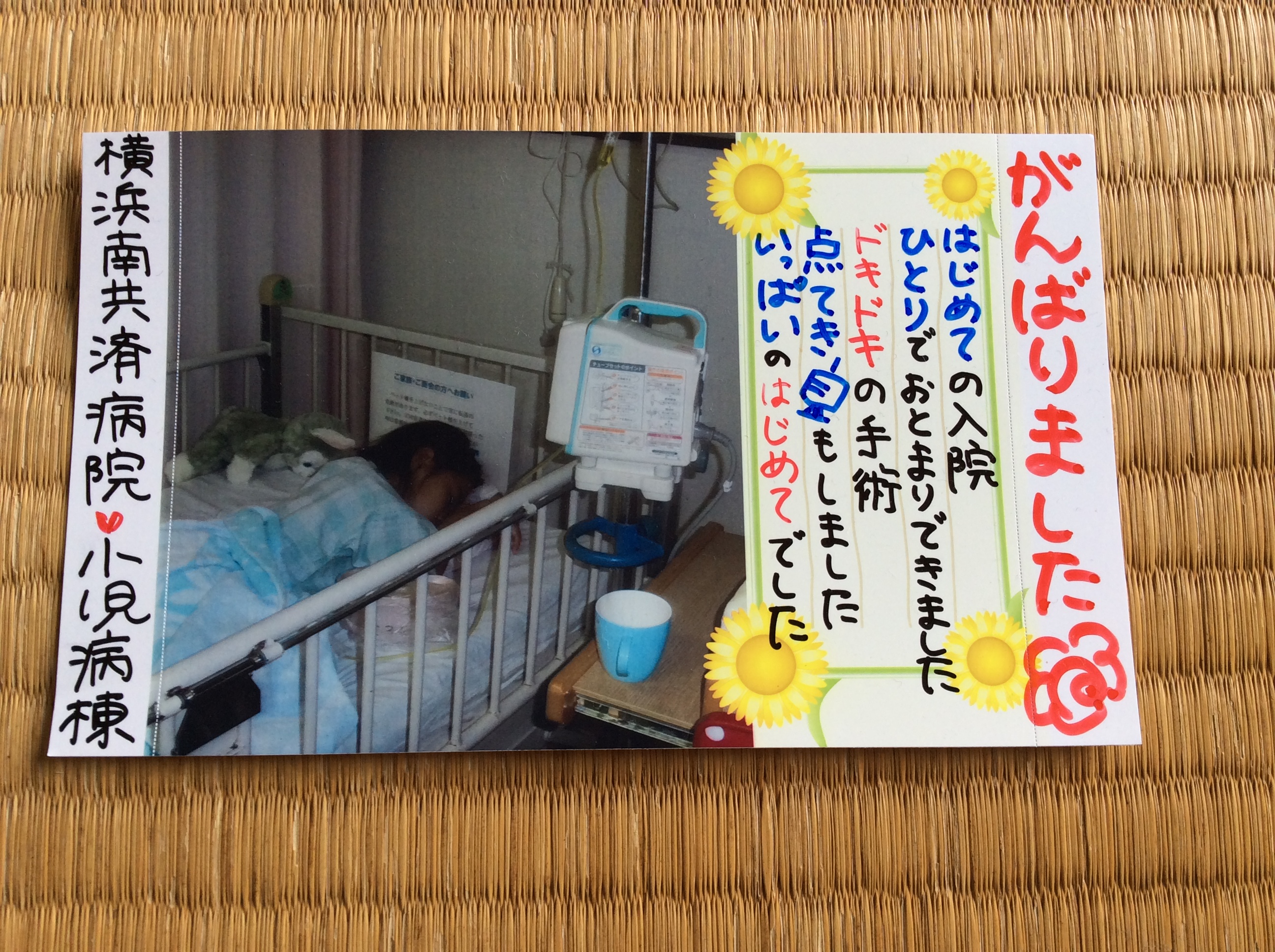 My 6 year-old daughter had her tonsils and adenoids out over summer vacation. She had been diagnosed with sleep apnea several months earlier and since nothing else was helping, finally I reluctantly agreed to the surgery.
My 6 year-old daughter had her tonsils and adenoids out over summer vacation. She had been diagnosed with sleep apnea several months earlier and since nothing else was helping, finally I reluctantly agreed to the surgery.
I was reluctant because hospital “culture” in Japan is very different from the US, where I am from, and because I knew I would be up against another cultural wall in regards to care for my older child.
This surgery, that requires a one-night stay in the hospital in either the US or UK (according to some quick research on my part,) here in Japan means seven nights in the hospital.
Since hospital rooms are shared, parents are not allowed to stay over night for any except the youngest of patients. Parents are expected to provide clean laundry and cutlery for the patient every day.
The children’s ward had a strict daily schedule, with times when they we’re confined to their beds (which literally had bars like a prison cell,) and times when, if they were well enough, they were allowed to use the playroom.
But absolutely under no circumstances whatever could they leave the children’s ward. And visitors under the age of 15 were not allowed in the ward.
This was a conundrum for me. I have a 9 year old son, who was on summer vacation at the time, and a husband who works 12 hour days, on a good day.
Hospital culture in Japan is strangely at odds with the wider culture in general. A high percentage of children co-sleep with their parents well into their elementary years. That is the cultural norm.
However, the hospital where my daughter had surgery, would not allow parents to spend the night with children over 2 years old.
This particular hospital allows parents of small children to stay until they fall asleep, but for my daughter, that may actually have been worse. Come lights out at 8pm, there was more crying in the children’s ward than from the nursery down the hall.
I had another child waiting at his friend’s house or at Baba’s (grandmother’s) house for me to come home, after all. My husband tried to get home from work at a decent hour, but I think he made it by 7pm once.
The day after the surgery, when my daughter was still feeling ill from the effects of the anesthesia and started bleeding from her nose, I was very grateful that she was in the hospital where I could have a professional attend to any concerns with the push of a nurse-call button.
Around Day 3, though, I could feel myself beginning to fall apart, fiber by fiber. The stress and plain old-fashioned exhaustion were starting to get to me.
My son at home was starting to feel the effects of being shuffled from place to place numerous times a day. My daughter wasn’t sleeping well and wanted to come home. I begged the doctor to discharge her a bit early, even a few hours would be great. His response was that the other child in the same room who’d had the same surgery on the same day was not recovering as well, and it would be upsetting for her if mine left earlier.
Excuse me, what? I thought, blinking several times, sure I had misheard. But I hadn’t.
On the day she was finally discharged, the nurses and staff presented her with a postcard, complete with a photo of her post-op, “to remember them by.” My first instinct was to burn it. Who would want to remember this? But I kept it, an ironic little reminder of the Japanese tendency to have “entrance” and “exit” ceremonies for everything.
I was reminded of a speech the principal of a junior high gave to the student body to announce that I was leaving: “People enter our lives, and at some point we must be parted. We should cherish each of these events.” Perhaps one day my daughter will value the card.
For now, she gets angry every time she sees it. The poor little girl has been waking up at night just “making sure I’m at home” for the past several weeks.
But now I look at the card and I feel profoundly thankful that my kids are, for the most part, healthy and happy. I don’t know how parents, who have to juggle (and it is a juggling with knives-type event, not harmless bean bags) a child’s hospitalization—along with the mundane tasks of everyday life that just keep coming, even when we are least able to deal with them—do it.
I say a little prayer for you every night, moms I do not know, and wish you strength and patience and space to breathe.
Has your child ever been hospitalized? What was it like for you, as a parent?
This is an original post to World Moms Blog from our mother of two in Japan, Melanie Oda.
The image used in this post is credited to the author.
If you ask Melanie Oda where she is from, she will answer "Georgia." (Unless you ask her in Japanese. Then she will say "America.") It sounds nice, and it's a one-word answer, which is what most people expect. The truth is more complex. She moved around several small towns in the south growing up. Such is life when your father is a Southern Baptist preacher of the hellfire and brimstone variety.
She came to Japan in 2000 as an assistant language teacher, and has never managed to leave. She currently resides in Yokohama, on the outskirts of Tokyo (but please don't tell anyone she described it that way! Citizens of Yokohama have a lot of pride). No one is more surprised to find her here, married to a Japanese man and with two bilingual children (aged four and seven), than herself. And possibly her mother.
You can read more about her misadventures in Asia on her blog, HamakkoMommy.
More Posts

by Mirjam | Oct 13, 2014 | 2014, Childhood, Cultural Differences, Family, Life Lesson, Netherlands, Uncategorized
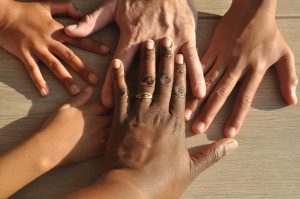 I’ve always had trouble knowing where to fit in. I have never known which box I was supposed to climb in or which label to stick on my forehead.
I’ve always had trouble knowing where to fit in. I have never known which box I was supposed to climb in or which label to stick on my forehead.
I was born in Surinam, but most of my life I have lived in the Netherlands.
My parents had a strong sense of culture and raised me accordingly.
We lived in a small town in the northern part of Holland that did not have many people of color.
Needless to say, things outside of my home were very different to things inside.
In my home there were loud voices and singing, dancing and vibrant music.
Outside of the home it felt like I needed to be ashamed of my mother’s loud voice,and I tried my best not to speak too loud.
Around my family I felt at home and liked my braids and dark skin.
Outside home, old ladies would sometimes come up to me and touch my ‘strange’ hair, and make me wish my skin wasn’t making it impossible to blend in or disappear.
There was lots of loud laughter in our home. My mother would read Anansi stories and we would laugh hysterically.
Outside of the home, I could not explain to people why any story that starts with: “Dear God, can you make everyone that laughs at someone else drop dead instantly…” is going to be a really funny one.
In Surinam culture it’s very important that children learn to respect their parents and older people. You never talk back, you never raise your voice and you always look down when you are spoken to by an adult.
At school the teacher would say: Look at me when I talk to you!
At home my parents would speak to each other and family members in Sranang tongo, their native tongue. They would speak to us in a mixture of Dutch and Surinamese, we spoke to them in Dutch. With my sisters I spoke in a mixture of Dutch and Surinamese.
At school I spoke Dutch and there were so many things I could not talk about or explain because there was no word for it in Dutch.
At birthdays, we had parties with lots of family and friends coming in from everywhere, staying for dinner and sleeping over. My mother would cook lots of food, aunts would help in the kitchen and the house was filled with all of these wonderful festive smells, and we would eat until we could eat no more.
When I was invited to a party of one of my friends, we sat in a quiet circle with mostly old family members having a polite conversation and we were given a piece of cheese with a little vlag stick (it’s a Dutch thing), everyone left before dinner and there was absolutely no music.
Growing up in these two cultures thought me how to adapt. I learned how to behave and what was expected of me in each situation. And because I was such a people pleaser, by the time I was in my teens, I could blend in anywhere and everywhere. and I knew what was expected of me. I also had lots of interest in different people.
The people I called my friends were a variety of ages, colors, cultures and mixtures and I loved every one of them.
Still, I always felt different.
I’m an adult now. I married a man whose skin color is the exact opposite of mine (no matter how much sun he gets). My children are of mixed culture. Their skin color is a mixture of ours, their hair is mixed, curly but not as curly as mine, dark but not as dark as mine.
My husband sometimes plays his (terrible) Dutch songs and I sing and dance with my children to old Surinam children’s songs. When we celebrate there’s lots of family and lots of food but no music, because my husband says he can’t have a conversation with music in the background. I teach my children to respect their parents and older people, but I also teach them that it’s okay to speak up and look people in the eye.
I mostly speak Dutch, but when emotional I turn to my native tongue, although my kids hardly understand what it is that I’m talking about.
I think here. With my own family a perfect mixture of black and white, Dutch and Surinam, east and west, I fit here.
Do you have a mixture of cultures in your family? How do you adapt?
This is an original post to World Moms Blog by Mirjam of The Netherlands.
Photo credit to the author.
Mirjam was born in warm, sunny Surinam, but raised in the cold, rainy Netherlands.
She´s the mom of three rambunctious beauties and has been married for over two decades to the love of her life.
Every day she´s challenged by combining the best and worst of two cultures at home.
She used to be an elementary school teacher but is now a stay at home Mom. In her free time she loves to pick up her photo camera.
Mirjam has had a life long battle with depression and is not afraid to talk about it.
She enjoys being a blogger, an amateur photographer, and loves being creative in many ways.
But most of all she loves live and laughter, even though sometimes she is the joke herself.
You can find Mirjam (sporadically) at her blog Apples and Roses where she blogs about her battle with depression and finding beauty in the simplest of things. You can also find Mirjam on Twitter and Instagram.
More Posts - Website
Follow Me:



by Olga Mecking | Sep 8, 2014 | Cultural Differences, Culture, Netherlands, World Motherhood
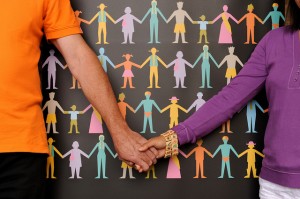 As a trainer in intercultural communication and mom to multilingual children, I am always taught to accept other cultures, various ways of thinking and perspectives of looking at the world.
As a trainer in intercultural communication and mom to multilingual children, I am always taught to accept other cultures, various ways of thinking and perspectives of looking at the world.
I may of course have a lot to learn about tolerance but I like to think that I’m doing a decent job at understanding all the different viewpoints. But there is a place where my tolerance stops.
One thing I have no understanding for is woo and quackery. The argument, “but indigenous tribes in enter-remote-location-here have been using this plant for ages and it cured all diseases” is useless when scientific research shows that said plant doesn’t work at all or can even be poisonous.
Unfortunately many people believe this stuff and it can have dangerous consequences. And then it gets worse.
Advocates of female circumcision claim that it’s a part of their cultural heritage and without it women feel they are not “real” women. But any cultural tradition that is based on suffering and disfigurement of the human body should be gotten rid of very quickly and no amount of cultural appreciation will suffice for me to accept such a tradition.
Let’s also remember that culture, while it brings people together and helps them get along better and makes sense out of their environment, can also smash our individualism and make us unhappy.
But as dangerous and untrue these claims are, it gets worse. Women get killed, raped, disfigured and humiliated every day. They are afraid to go out on the streets in the evenings; they take great care in picking their clothes out of fear of being proclaimed “indecent”.
In many parts of the world, people kill each other over cultural, religious or political differences which are often minor. In some parts of the world, certain people are considered worse than other people.
Should we just accept it as it is, saying, “It’s another culture, we shouldn’t do anything about it, we should just appreciate our differences”? I agree that cultural diversity is great- and I myself benefit tremendously from it. But shouldn’t we be drawing a line somewhere? And if so, where should we draw it?
In her book, “Medaliony”, Polish writer Zofia Nałkowska tries to make sense of what happened during WWII in Poland. She could have put blame on the Germans, the way many Polish people did and still continue to do today. But she didn’t. Instead, she wrote, “People prepared this fate for people”, or in a better translation, “humans prepared this fate for humans.”
I guess that line should be drawn when it’s not about cultural differences anymore. When the action in question can’t be explained by traditions, cultural heritage or tolerance. In short when it’s about humans hurting or killing other humans.
A common criticism of the understanding cultures approach is that deep inside, we are all the same. Of course there are some things that are universal: we are all humans, we have hearts and brains and skins. We’re so afraid that if we start mentioning our differences, we will start comparing ourselves to others and consider some of us better.
I beg to differ. Of course we are all humans and some of the things we do are universal. But the truth is that we are an extremely varied species, on a wide spectrum of sizes, skin colours, temperaments and cultural and social backgrounds.
Saying we are all the same eradicates the wonderful differences in us and I think that’s a shame. We are all humans and all different, and if one human kills another human it’s a tragedy.
Sadly, such tragedies happen all the time. Recently, the three boys: Eyal Yifrcah, Gil-Ad Shaer, and Naftali Fraenkel disapeared and were later found dead. The #BringBackOurBoys campaign, while beautiful, did nothing to revive them. Then, the flight MH17 crushed in Ukraine. Expatica Manager Antoine van Veldhuizen was on that plane. He and other victims of the plane crash will be hugely missed and the Netherlands are in mourning.
We like to say that humans are great with making sense out of tragedies. They need to feel that they suffered for a reason. Again, I beg to differ. Suffering and pain don’t make sense. We can certainly make sense out of them but to do so means to accept that and this is something I’ll never ever do.
Humans killing humans doesn’t make sense. And no amount of cultural appreciation classes or tolerance will convince me otherwise. Before you see someone as a part of a certain culture or religion, you’d better see the individual human first.
Our differences shouldn’t divide us. They should bring us together.
But above all, being different is no excuse to kill other people.Because nothing ever is an excuse to kill, nor should it be.
Instead, killing other people should be considered the shocking and saddening tragedy that it is and nothing should ever change that.
This is an original post for World Moms Blog by Olga Mecking, The European Mama, from the Netherlands.
Photo credit: DIBP images. This picture has a creative commons attribution license.
Olga is a Polish woman living in the Netherlands with her German husband. She is a multilingual expat mom to three trilingual children (even though, theoretically, only one is trilingual since she's old enough to speak). She loves being an expat, exploring new cultures, learning languages, cooking and raising her children. Occasionally, Olga gives trainings in intercultural communication and works as a translator. Otherwise, you can find her sharing her experiences on her blog, The European Mama. Also take a while to visit her Facebook page .
More Posts - Website
Follow Me:




 This month marks our third anniversary of living in Jakarta. Considering how empty our house was when we first arrived here, I am staggered at how much stuff we have acquired in that short time.
This month marks our third anniversary of living in Jakarta. Considering how empty our house was when we first arrived here, I am staggered at how much stuff we have acquired in that short time.















